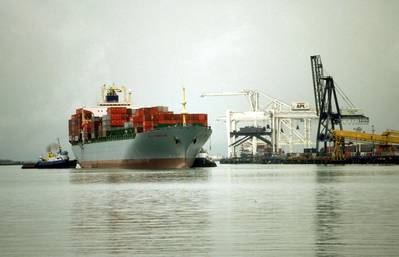NOAA Takes First Broad Look at Soot from Ships
Tugboats puff out more soot for the amount of fuel used than other commercial vessels, and large cargo ships emit more than twice as much soot as previously estimated, according to the first extensive study of commercial vessel soot emissions. Scientists from NOAA and the conducted the study and present their findings in the July 11 issue of the journal Geophysical Research Letters.
The primary sources of soot, or small particles of black carbon, are fossil fuel combustion, wildfires, and burning vegetation for agricultural purposes. In the , an increase in soot may contribute to climate change if shipping routes expand, according to the study.
“Commercial shipping emissions have been one of the least studied areas of all combustion emissions,” said lead author Daniel Lack, of NOAA’s Earth System Research Laboratory (ESRL) and the NOAA-CU Cooperative Institute for Research in Environmental Sciences. “The two previous studies of soot emissions examined a total of three ships. We reviewed plumes from 96 different vessels.”
Lack and his colleagues observed emission plumes from commercial vessels in open ocean waters, channels, and ports along the southeast and during the summer of 2006. From the NOAA research vessel, Ronald H. Brown, the team measured black carbon emitted by tankers, cargo and container ships, large fishing boats, tug boats, and ferries, many of them in the Houston Ship Channel.
Commercial shipping releases roughly 130,000 metric tons of soot per year, or 1.7 percent of the global total — much of it near highly populated coastlines, the authors estimate. In the coming years global shipping is expected to grow two to six percent annually.
Tugs emit nearly a gram of soot per kilogram of fuel burned — twice as much as any other vessel type, the authors found. The high levels point to their low-quality fuel — a thick, black tar left over from crude oil after the gasoline and kerosene have been removed. Engine age and maintenance also play a role. Tugboats have a disproportionate impact on air quality because they travel within ports, emitting potentially harmful particles near populous urban areas, according to the authors.
“Tugboats are a huge source of black carbon that may be under-reported or not reported at all in emissions inventories compiled by ports,” said Lack.
Oceangoing tankers and container ships emit half a gram per kilogram of fuel burned when at dock and slightly less when traveling, according to the study. That’s more than twice as much as previously estimated.
A 2007 study by American and German scientists linked particle pollution from shipping to tens of thousands of premature deaths each year, most of them along coastlines in Europe, East Asia, and . Soot makes up a quarter of that pollution, said Lack.
On a global scale, soot currently traps about 30 percent as much heat as does carbon dioxide, the most important greenhouse gas, according to the latest assessment of the Intergovernmental Panel on Climate Change. The small dark particles absorb sunlight, create haze, and affect how clouds form and make rain, further altering a region’s heat balance, according to the new NOAA study. If commercial shipping extends new routes through Arctic waters as they become navigable, soot emissions there could increase.
The National Oceanic and Atmospheric Administration, an agency of the U.S. Commerce Department, dedicated to enhancing economic security and national safety through the prediction and research of weather and climate-related events and information service delivery for transportation, and by providing environmental stewardship of our nation's coastal and marine resources. Through the emerging Global Earth Observation System of Systems (GEOSS), NOAA is working with its federal partners, more than 70 countries and the European Commission to develop a global monitoring network that is as integrated as the planet it observes, predicts and protects.







